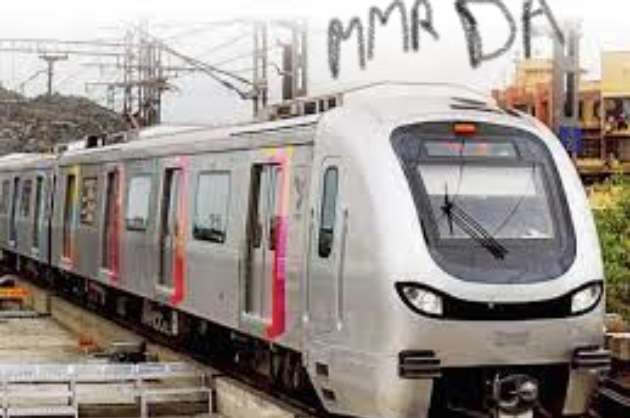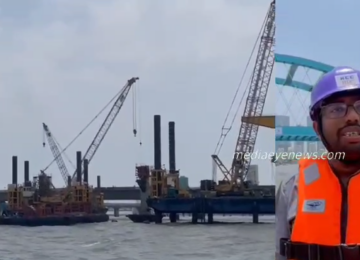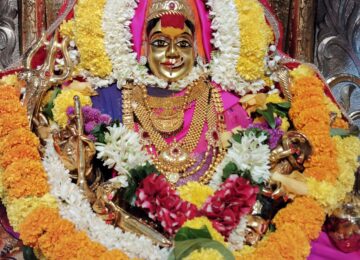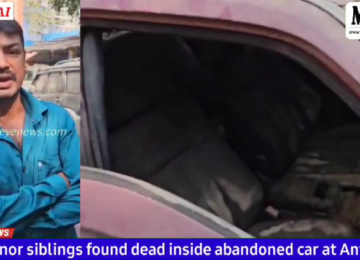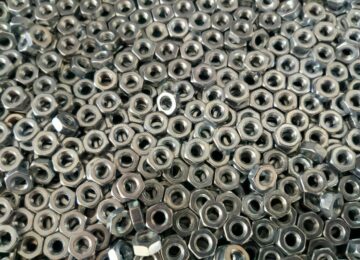Anupama Nair
Railways still occupies a significant role in the world of transportation. A train can carry large number of passengers and also large and heavy loads to very long distances. Since its inception in the 19th Century in England, railway systems had witnessed lots of changes in term of shape, speed, mode of running, distance etc., and one among the changes, and the most important is considered to be the emergence and spread of metro rail system in the world.
The word metro is derived from an abbreviation of 'Paris Metropolitan', which become common word used to call all subway network. Sometimes metro is regarded as rapid transit train system. The world's first urban underground railway was ‘Metropolitan railway’ which began its operation on January 10, 1863. It was built largely in shallow tunnels and is now part of the London underground. Then there was an idea of an underground railway terminus which was supposed to start in the 1830s, and the Metropolitan build a line in 1854. The United States had been using the subway tunnel in Boston that is still in use from 1897! Much later subway lines were built to carry heavy rail trains. The New York City has world's largest 4-track line, that almost stretches 9 miles(14.5kms) . On October 17, 1919 the Madrid Metro was inaugurated, which today is one of the longest metro system in the world.
The first city in Asia to have subway lines were Tokyo in 1927 and Osaka in 1933. After 1974, a number of cities in South Korea have developed modern and extensive subway system.
Rapid transits in India consist of Metro, Monorails and light rail system. The first rapid transit system in India was the famous Calcutta Metro, that started operations in 1984. E. Sridharan, popularly known as ‘Metro Man’ was the man who deserves credit behind this great effort. The metro rail system in India is popularized and developed due to his amazing efforts and hard work. Delhi Metro was India's first modern metro which began its operation in 2002. The Rapid Metro Rail Gurgaon, that started operation in November 2013, is India's first privately owned and operated metro.
The Government of Maharashtra with financial assistance from the World Bank and MMRDA under the Mumbai Urban Transport Project (MUTP) prepared the Comprehensive Transportation Study (CTS) for the Mumbai Metropolitan Region in 2008 known as Transportation Study for the region of Mumbai (TRANSFORM). The premier objective of the study was to identify the travel modes and travel patterns of the residents in the MMR and recommend a long-term comprehensive transportation strategy for MMR up to the year 2031. One of the major recommendations of TRANSFORM was the development of a Multi-Modal Corridor in MMR to take care of the varied travel demands of the region for the horizon period up to the year 2031. One such corridor is planned from Virar to Alibaug.
Louis Berger Group Inc. was appointed for the preparation of the Techno-Economic and Financial Viability Study which began in August 2010. This 126-kilometre long Virar-Alibaug Multi-Modal Corridor will connect NH-8, Bhiwandi bypass, NH-3, NH-4 and NH-4B, Mumbai-Pune Expressway, NH-17, etc. The Multi-Modal Corridor will be a crucial step towards development, strengthening and creating job opportunities in seven growth centres in MMR such as Virar, Bhiwandi, Kalyan, Dombivali, Panvel, Taloja and Uran. The corridor will also be useful for the development of Navi Mumbai International Airport, JNPT Port, MTHL and Dedicated Freight Corridor. This Corridor will carry all the traffic from JNPT towards Navi Mumbai and Thane outside the city and will help reduce traffic congestion within the city. The travel time between Virar to Alibaug will also be reduced by 50 per cent.
However, Metro in Mumbai made its entry much later than other cities. The Metro Line-1 was inaugurated for public use on 8th June, 2014, between Andheri and Ghatkopar. It became very popular mode of transport. Mr. Uddhav Thackeray had inaugurated two new lines of Mumbai Metro on the occasion of Gudi Padwa i.e., the Marathi New Year on 2nd April 2022, nearly eight years after the Mass Rapid Transit System first made its entry into the financial capital of the country. It is indeed a wonderful way to celebrate the new year for Mumbaikars – their travel woes are over; they will avoid never-ending traffic and save time and precious fuel. The former CM had flagged off the inaugural 6-coach BEML train on Line-7 and then travelled on from Aarey to Dindoshi
Our beloved Prime Minister Mr. Narendra Modi had laid the foundation stone of both projects in October 2015 with a combined cost of Rs. 12,618 crore. This milestone was recorded roughly 4.5 years after the first U-girder was launched in July 2017 by J. Kumar Infra Projects at Borivali who are the contractors for Line-2A’s civil structure and the mid-section (Poisar-New Ashok Nagar) of Line-7, while NCC built the Poisar – Dahisar section. The trial runs were earlier conducted in May 2021 with Line-7’s OHE traction system getting energized by Larsen and Toubro and Leena Powertech Engineers and Line-2A’s system by Sterling and Wilson.
The trains will operate between 6 AM to 10 PM with fares of Rs. 10 (0-3 km), Rs. 20 (3-12 km) and Rs. 30 (12-18 km), Rs. 40 (18-24 km) and Rs. 50 (24-30 km). As of now, the ticketing will be handled via a QR code-based mobile and paper tickets. Smart cards and app-based season tickets will be launched at a later time. With this thrilling development, Mumbai’s Metro Network has become 30.15 km long with 3 lines. It took a long time to “push the needle and arrive at this stage after a lost decade of poor planning and policy making (PPP vs EPC) between 2005-2015”.The Commissioner of MMRDA claimed the remaining 15.85 km Phase 2 of Line-2A (Dahanukarwadi–Andheri West) and Line-7 (Aarey–Gundavali) will be inaugurated by 15th August 2022, to connect with Line-1 (Versova – Ghatkopar). What a gift for independence Day!
The MMRDA commissioner further said the trains which will be deployed on the elevated corridors have been designed for driverless operations along with CBTC signaling systems. However, during the initial phases, the metro trains will be manned by operators or attendants, including a few female pilots. In the future, the system will be upgraded to unmanned train operation, he said, further adding though the corridors’ sanctioned speed is 80 km per hour, initially the metro trains will be operated at 70 km per hour. According to him, 150 services will be operated daily on these two lines with 11 rakes, each of six coaches. Over 2,250 commuters can travel on a metro train at a time.
The MMRDA has done multi-modal integration at the stations and the BEST undertaking buses will be operated as feeder services, Srinivas said. The MMRDA has targeted to finish phase two of the corridors by August 15, he added. Mr. Aditya Thackeray, was very proud of the achievement of MMRDA and other agencies responsible for the Metro. He said, “ The MMR is a hub of economic as well as socio-cultural activities that puts a strain on the infrastructure. However, it is gratifying to see that MMRDA is implementing its transportation plan without compromising on environmental sustainability. The design of coaches as well as stations are energy efficient and disable-friendly thus, matching with high International standards of universal accessibility. I congratulate MMRDA on planning and implementing of the metro lines in a holistic way”.
It is believed that “ the standard of living, economic efficiency as well as the well-being of citizens is directly related to the efficiency of transport system. In the last 15 years, the MMRDA, CIDCO, MCGM and other government bodies have implemented a number of transport corridors to ease traffic congestion and overcrowding in the public transport system.

